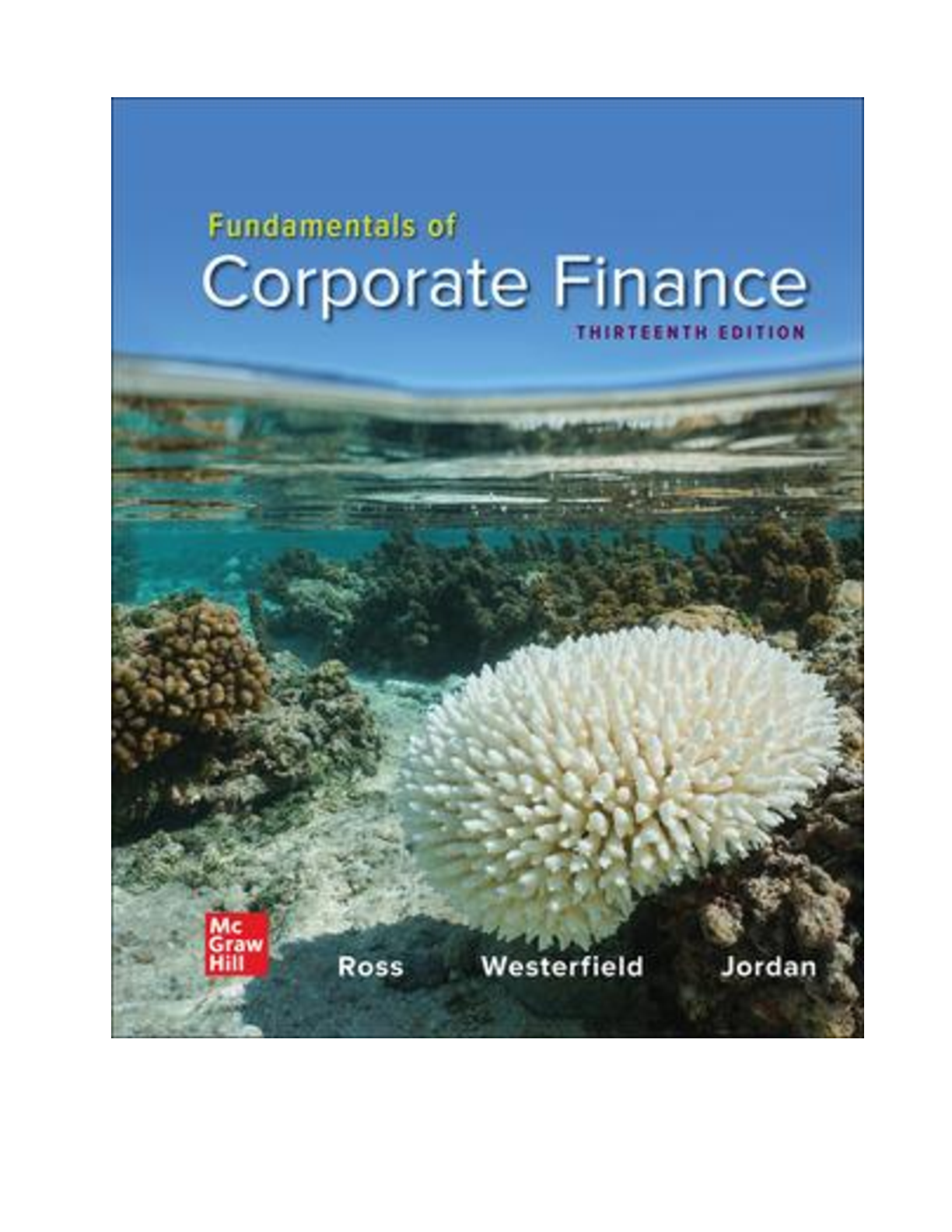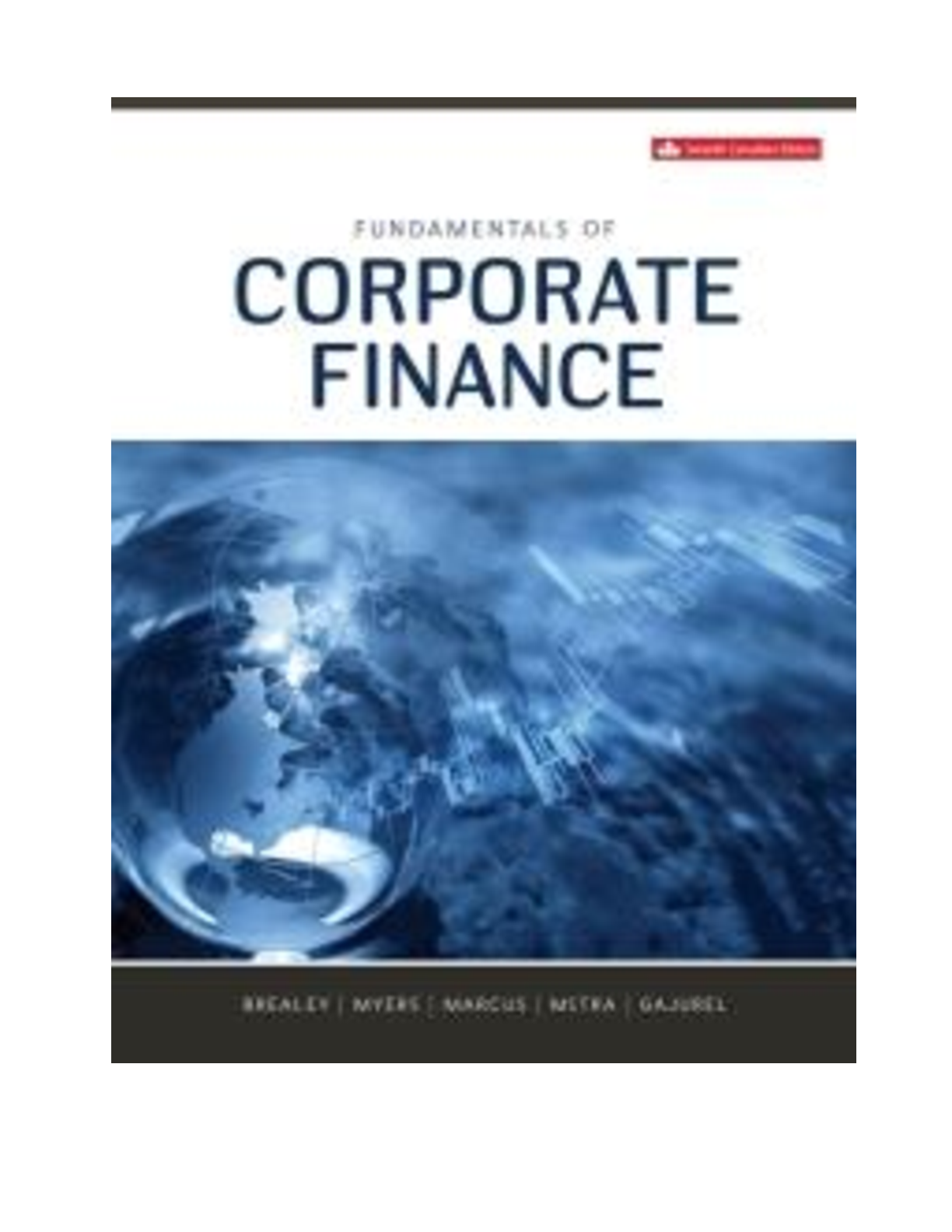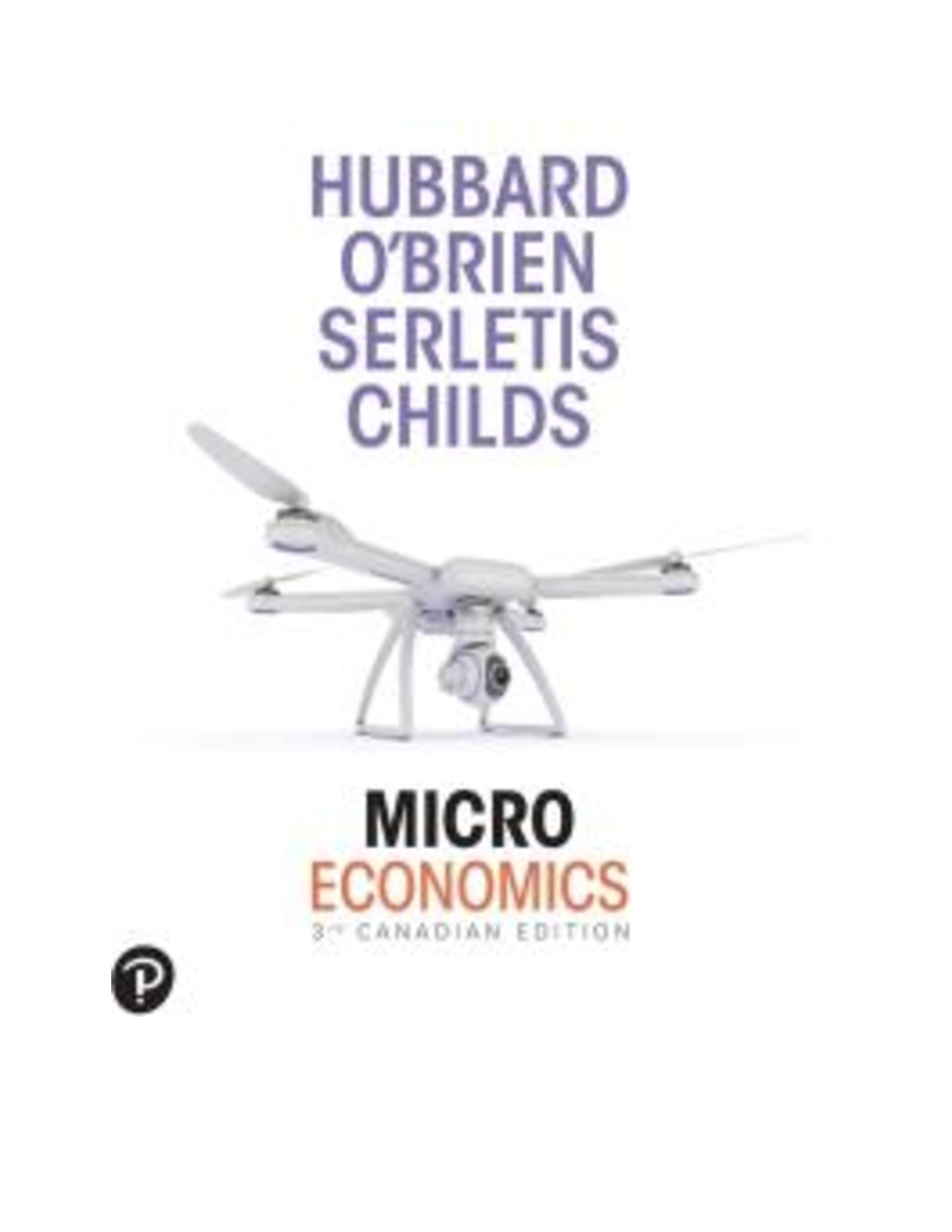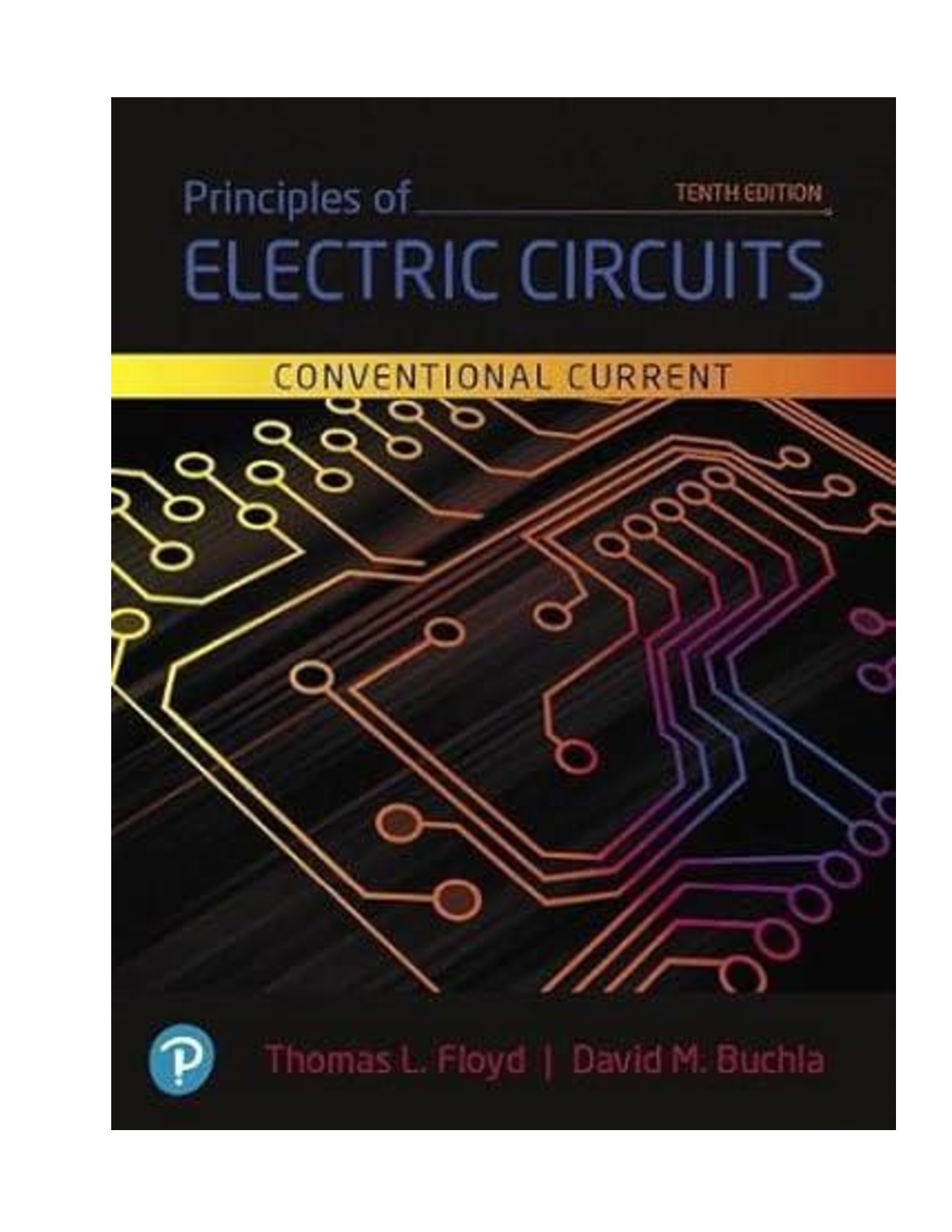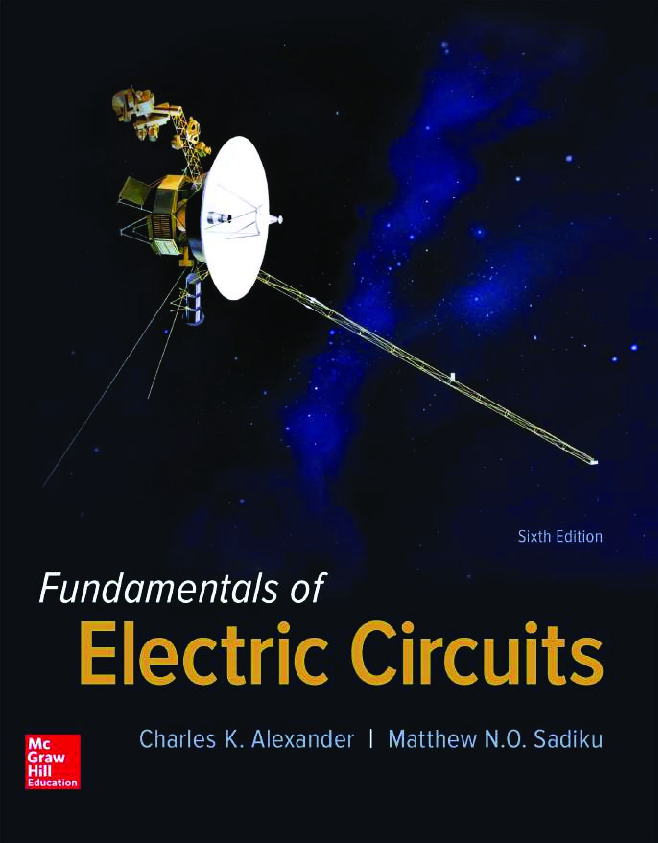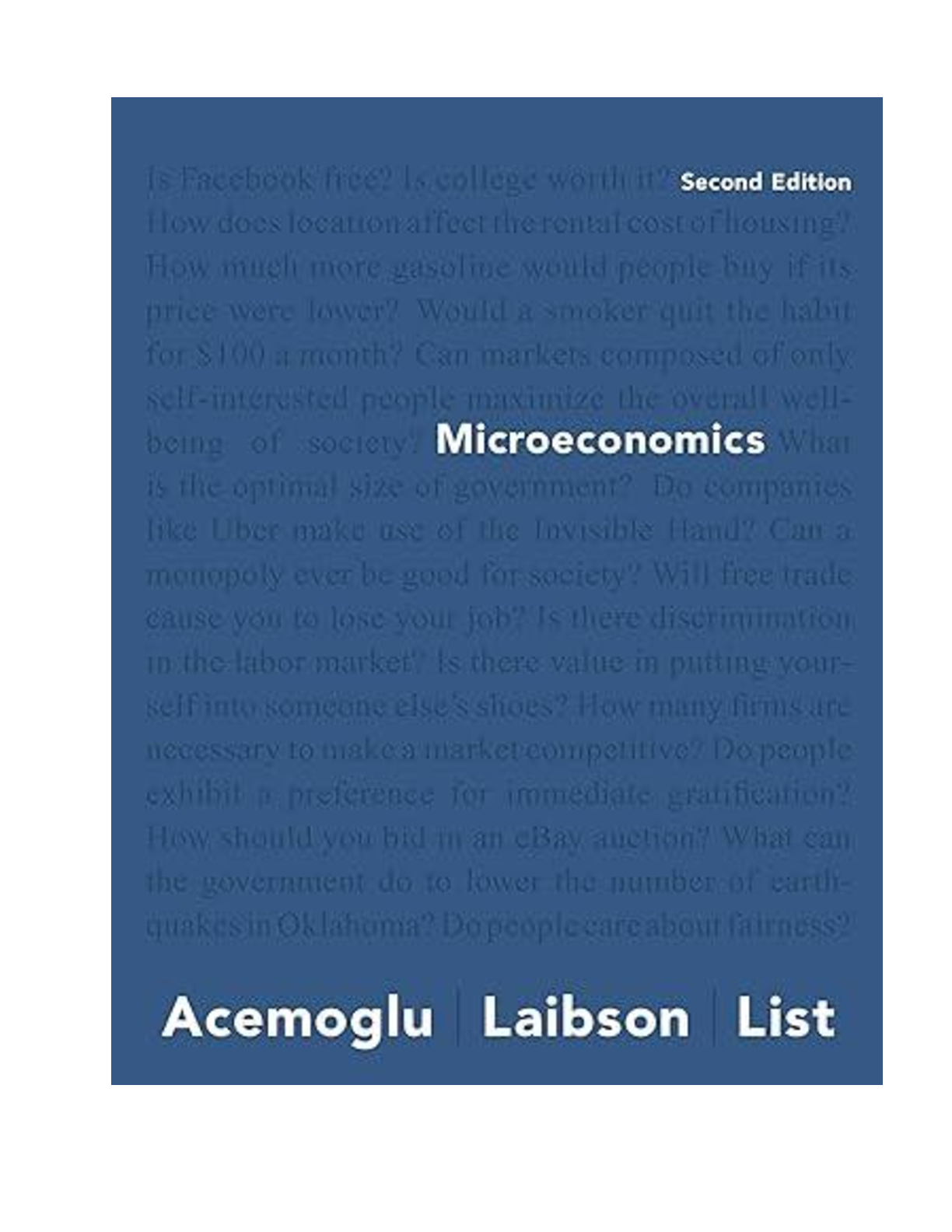Economics > eBook-PDF > [eBook][PDF] Microeconomics, 2nd(Global Edition) By Daron Acemoglu, David Laibson, John (All)
[eBook][PDF] Microeconomics, 2nd(Global Edition) By Daron Acemoglu, David Laibson, John
Document Content and Description Below
Three key principles—optimisation, equilibrium, and empiricism—lie at the heart of the authors’ approach. Chapters 1 - 4 introduce these key themes, and lay the groundwork for understanding the ... economic way of thinking about the world. Optimisation. The first principle--that people try to choose the best available option--is optimisation. Economists believe that optimisation explains most choices people make, including minor decisions like deciding whether to eat a cheeseburger, and major decisions like deciding whom to date or marry. When people fail to optimise perfectly, economic reasoning can be used to analyse the mistake and to suggest a better course of action. Equilibrium. Economic systems tend toward equilibrium, wherein each economic actor feels that he or she cannot do any better by picking another course of action. This principle highlights the connections among economic actors and their choices. In a state of equilibrium, consumers and purveyors of goods and services are simultaneously optimising, and their behaviors are consequently intertwined. Empiricism. While the first two key principles are conceptual, the third is methodological. Economists use data to test economic theories, learn about the world, and speak to policymakers. The emphasis on matching theories with real-world data to answer specific questions helps to show students the evidence behind the theory, making economics concrete, interesting, and fun. Examination of causality. By studying recent research that reports a positive correlation between expensive weddings and high rates of divorce, students will learn to determine the difference between correlation and causality, and better understand the role of omitted variables (Chapter 2). Coverage of the fracking revolution and its impact on oil and gas prices. Supply and demand come alive when students can see how the recent rightward shift in the oil supply curve--due to the development of fracking technologies--has played a role in halving the equilibrium price of oil (Chapter 4). Focus on the shared economy. The role of surge pricing in equilibrating Uber driver supply and rider demand is discussed, helping students to more deeply understand the markets that they personally use (Chapter 7). Emphasis on the role of microeconomics in examining prominent social issues. From natural disaster management to global inequality, students examine important social issues--such as how to reduce fracking-generated earthquakes by applying the concept of externalities, inequality in Scandinavia, broadband access, and more. Coverage of the recent election to teach topics like probability. Students use analytic tools to understand how to interpret forecasts on the eve of the election (Chapter 15). Evidence-Based Economics (EBE) features show how economists use data to answer the question posed in the opening paragraph of each chapter. EBEs use actual data from field experiments, lab experiments, and the government or naturally occurring data, while highlighting major concepts in the chapter. These features let students get a real look at economics as it plays out in the world around them, and gives them the skills to question systematically and evaluate what they read. Examples include: Choice and Consequence features emphasise optimisation--one of the key themes in the book--by focusing on making the best decision. These features ask students to make an economic decision, or evaluate the consequences of past real decisions. The authors then explain how an economist might analyse the same decision. Examples of choices investigated include: An integrated approach to [Show More]
Last updated: 1 year ago
Preview 1 out of 752 pages
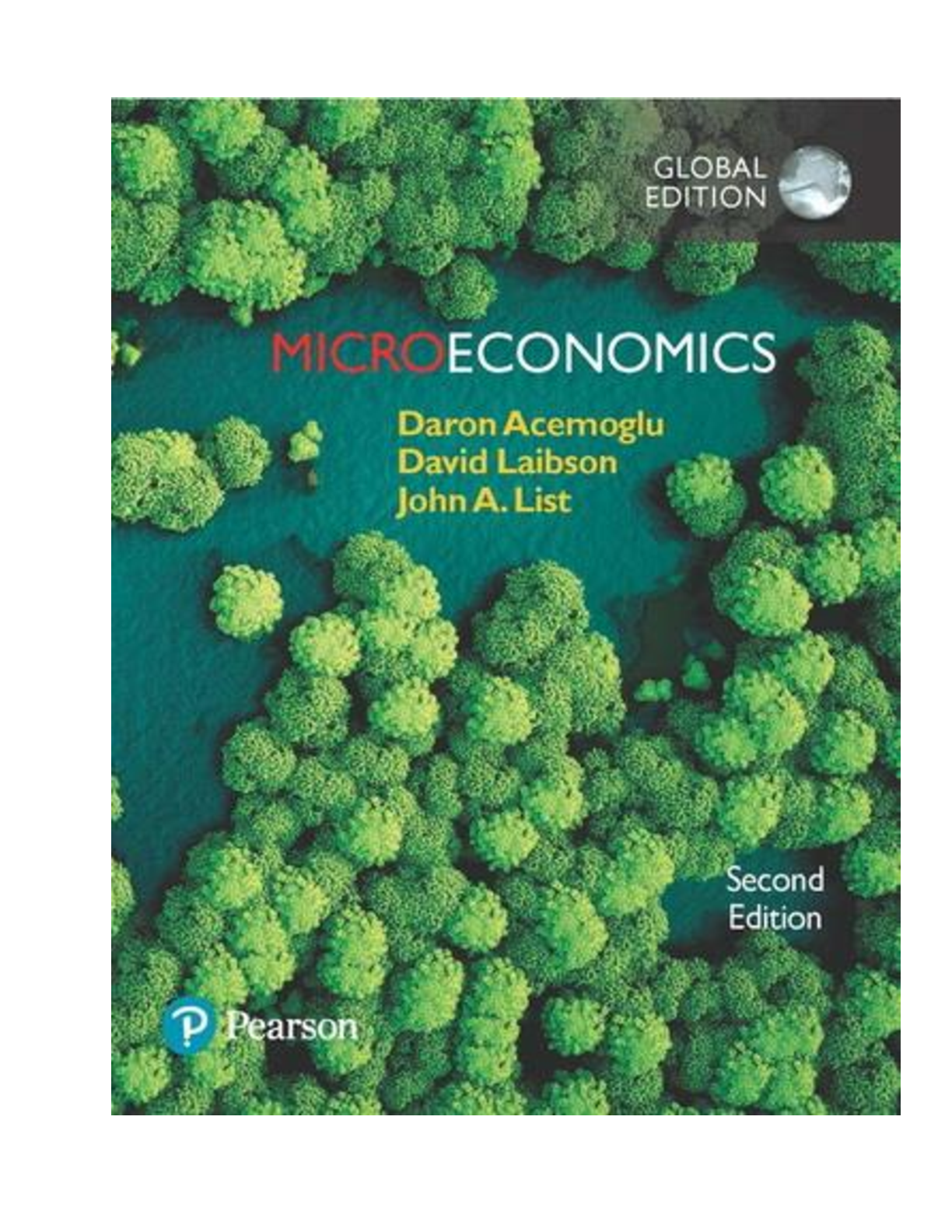
Buy this document to get the full access instantly
Instant Download Access after purchase
Buy NowInstant download
We Accept:

Reviews( 0 )
$14.50
Can't find what you want? Try our AI powered Search
Document information
Connected school, study & course
About the document
Uploaded On
Sep 17, 2023
Number of pages
752
Written in
Additional information
This document has been written for:
Uploaded
Sep 17, 2023
Downloads
0
Views
173

